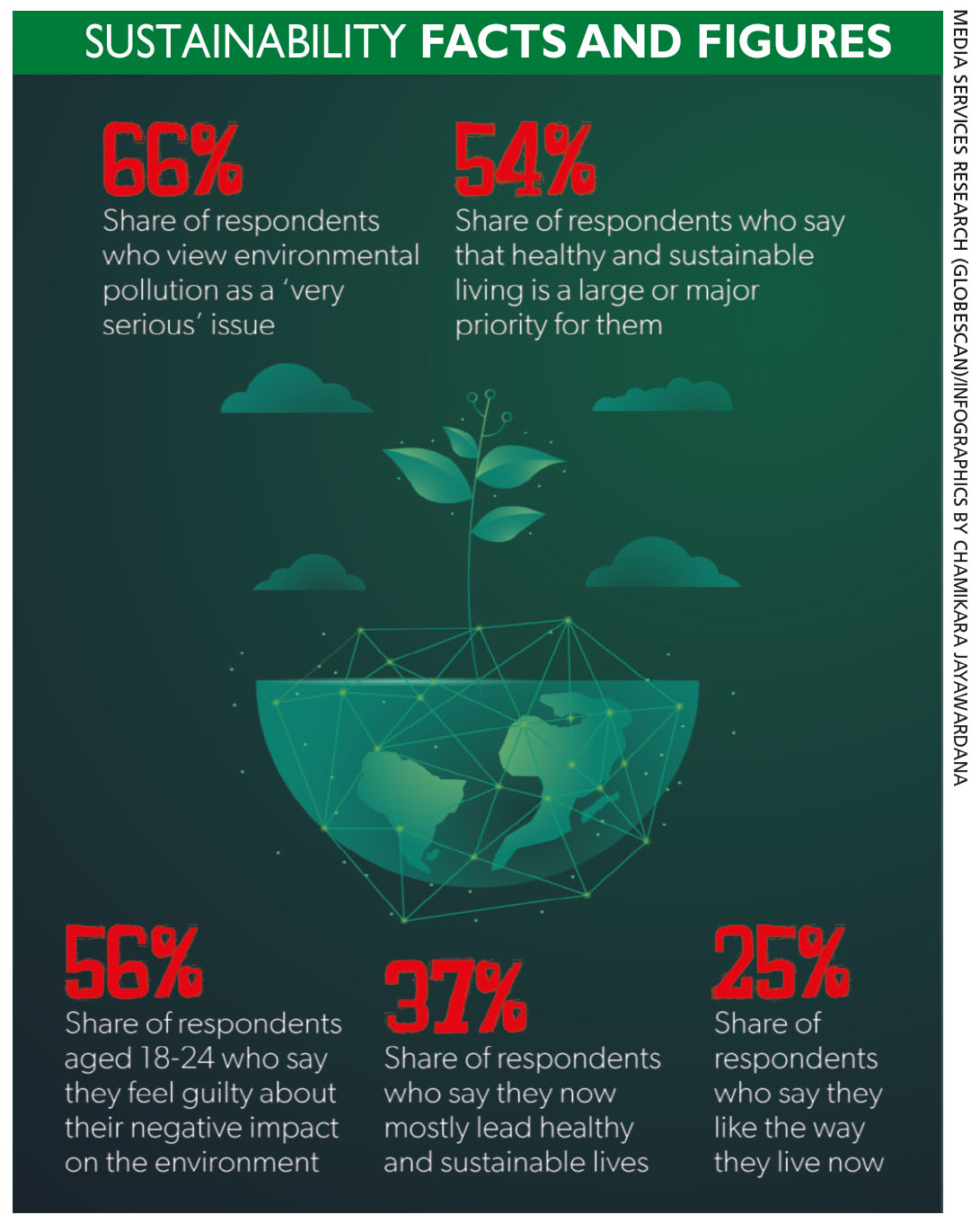SUSTAINABLE LIVING
SHIFTING CONSUMER TRENDS
Prioritising the ethos of people and planet – Kiran Dhanapala
Previously, corporates were largely focussed on either people or the planet in their sustainability game plans. One was often heavily weighed in favour of the other in strategies, communications and rhetoric. This trend is changing as companies are increasingly being called upon to act on both fronts by customers, employees and other stakeholders.
An example of this is IKEA, which has employed a dual focus on people and planet since 2012 with its ‘People & Planet Positive’ sustainability strategy. The company has a long-term focus, and is clear on its challenges and goals.
IKEA’s approach is to balance economic growth and positive social impacts with environmental protection and generation. And its latest strategy focusses on three areas – viz. healthy and sustainable living; becoming circular and climate positive; and being fair and equal.
Its leadership stand demands that the company thinks broadly, which includes encouraging consumers to shift to more conscious lifestyles and sustainable consumption.
The focus on people and planet will certainly gather momentum especially in particular sectors with the most likely including retail, fashion and apparel, and food. More consumers – especially millennials – are expected to vote by spending on ethically sourced sustainable products in the future.
Producers embarking on circularity is an important way forward. Circular design and material use means using recycled knit fabrics in clothes and shoes. For example, SUAVS developed a high-top sneaker from recycled water bottles averaging eight bottles a pair.
Nonprofit Ten Thousand Villagers serves as another example of putting the people and planet ethos first as its mission. It sees its mission as being an agent of social change, providing people who are largely from poor countries with decent work to produce goods for its stores.
These stores centre on selling a story – i.e. the producers, and their cultures, artisanal communities, skills and more. The stores focus on consumers experiencing producers’ stories through multimedia communications and offer experiential buying by promoting cross-cultural understanding that cannot be easily replaced by e-commerce alternatives.
This retail model reflects the organisation’s twin ethos as its stores are also modelled on sustainability with recycled materials and objects, energy conservation, eco-wrapping stations and so on.
The nonprofit’s values are reflected through all its messages – be they friendly and mission driven staff or the recycled paper used. It employs a reverse retail model by paying more for products and earning slim margins. Additionally, producers are paid half the amount for orders placed, which are often delivered a year later.
Given the growing concerns about pollution, climate change and rising inequalities, people are becoming more well-intentioned in their drive to living more sustainably. An era of conscious consumption appears to be on the horizon, enabling both consumers and producers to commit to people and planet approaches.
But a wide gap remains between intent and action.
According to a global survey on healthy and sustainable living, this gap is explained by several challenges to sustainable consumption.
Costs, insufficient government and business support, and a lack of knowledge are cited as the main barriers that prevent people from becoming healthier and living more sustainably. Other barriers include complacency with consumers’ current lifestyles and the inconvenience associated with change.
It’s clear that education and awareness are needed to encourage consumers to shift to more sustainable lifestyles. The survey’s findings reveal that the gap between intent and action exists in Asia and globally.
In Sri Lanka, producers are beginning to manufacture natural vegetable dye based clothing to serve global and local markets while polyethylene terephthalate (PET) bottles are used to produce fabric advertised by the Sri Lankan cricket team. These scenarios attest to the country’s innovative and visionary abilities, in how it can work to serve the people and planet ethos.
Given the trend towards sustainable consumption, some advertisers are questioning their promotion of overconsumption. Creativity can shift these trends such as with Patagonia’s ‘Don’t Buy This Jacket’ campaign, which encouraged customers to think before buying.
A responsible move by others is promoting an ‘Unconsumption List.’ This involves not promoting consumption as a route to happiness, success and love, or excessive promotions and shopping holidays. Instead, it promotes needs over wants, creating meaning over materialism, and references the five Rs – i.e. reduce, repair, reuse, recycle or reimagine.
While material security and a steady job or higher corporate profits defined success at one time, we’re learning that purpose – be it individual or corporate – is our compass to bettering both people and the planet.





